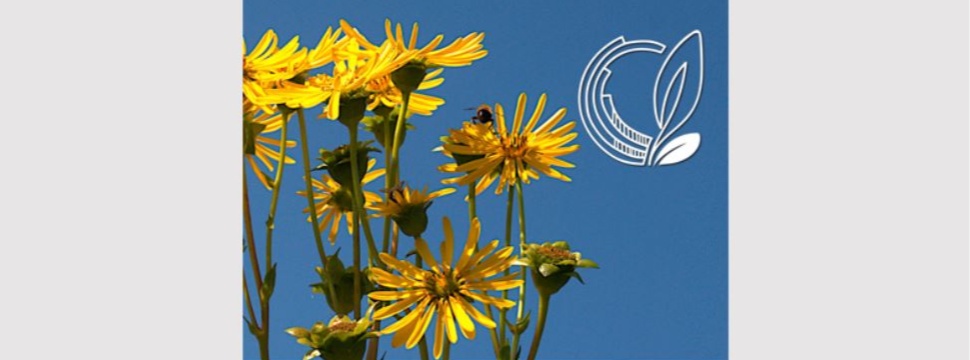Life cycle assessment of silphia fibers - How environmentally friendly is paper made from silphia fibers?
News General news
The basis for paper production is almost exclusively wood pulp, whether as virgin fiber or deinked material. Another - still little-known plant - could now become a new, sustainable fiber supplier for paper production: the perennial energy plant "perennial silphia". Fraunhofer UMSICHT prepared a life cycle assessment study on paper made from silphia fibers for OutNature, a supplier of silphia-based fiber and paper products, investigated the potential environmental impact of silphia paper and compared it with conventional packaging paper made from virgin fibers.

The primary raw material for paper production is pulp, which is obtained from wood. Paper production is energy- and resource-intensive and requires a high input of chemicals. At the same time, the demand for paper packaging, which replaces plastic, for example, is increasing, partly due to ever greater demand in online retailing. Alternative renewable raw materials and environmentally friendly processes for paper production are therefore in demand. OutNature, a subsidiary of the environmental services provider PreZero, specializes in producing fiber and paper products as a basis for sustainable packaging solutions, in particular on the basis of the energy plant "continuous-grown silphia". Originally from North America, this plant has gained importance in Germany in recent years as an alternative to corn cultivation and is used as biomass in biogas plants. The silphia plant is a perennial wild perennial that is insect-friendly and also has positive effects on erosion and water pollution control.
From cultivation to disposal
For OutNature, Fraunhofer UMSICHT compared the life cycle assessment for paper made from silphia with that of paper made from bleached or unbleached pulp board and included in the analysis both the cultivation of silphia as biomass and the material and energy recovery of the silphia fibers, including end-of-life, disposal. Qualitatively, the two types of paper do not differ; both can be processed into packaging and printed. Silphie paper is also suitable for packaging applications with direct food contact. Paper and board based on silphia fibers can be recycled industrially or through household collection and made into new paper. More in-depth studies on this will be presented soon. In both pulp board production and silphie paper production, part of the biomass is used for energy. In the case of pulp board, this is the lignin portion of the wood; in the case of silphie paper, the fiber is separated and a fermentation substrate is produced that is used for biogas production.
Positive climate effects from silphia paper
The LCA study showed that silphia paper has some positive environmental effects compared to pulp board: freshwater is less eutrophied, ozone depletion and smog formation are lower, resource utilization of minerals and metals is more environmentally friendly, and land use improves due to the high land yield of silphia. With regard to climate change and consumption of fossil raw materials, pulp board shows advantages, especially because renewable energy from integrated pulp production is mainly used. Cultivation-relevant environmental impacts such as acidification of the soil are also higher for silphia paper than for pulp board, since no fertilization is applied to the forest. The evaluation of the individual life cycle stages has shown that the energy consumption of the non-integrated paper machine is decisive for the environmental impacts of silphia paper, since the pilot paper machine used today for the production of silphia paper is at the technical level of the 1960s.
Another important aspect for the life cycle assessment is the proportion of pulp in the silphia paper. Currently, up to 50 percent silphia fibers and up to 50 percent pulp are used for paper production. Silphie fiber production causes less environmental impact than pulp production. Compared to pulp, silphia fibers have a significantly lower climate impact. "The production of biogas from silphia and its conversion to electricity has a positive effect on the overall balance," explains Dr. Daniel Maga, Group Leader, Sustainability Assessment at Fraunhofer UMSICHT.
"The results of the life cycle assessment study are promising; the paper manufacturing process alone currently still causes the largest amount of greenhouse gas emissions. With silphia fibers, we have succeeded in generating a regional and renewable raw material with a transparent supply chain, which also makes sense as a pulp substitute from an ecological point of view," explains OutNature Managing Director Thomas Tappertzhofen.
Translated with www.DeepL.com/Translator (free version)










